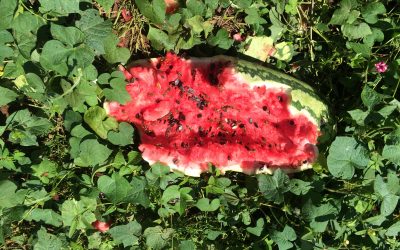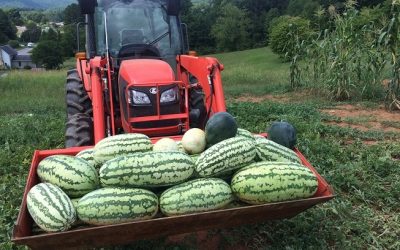
Welcome to Open Spigot Farm!
Follow our adventures on…
Open Spigot Farm Fall and Winter Update
Summer’s bounty continued into September at the farm. Harvesting on the farm was hindered by the copious amount of rain, but our tried and true crop, okra, didn’t let us down. The okra was towering over farmhands Lexi and Marley, and picking was done almost...
Sweet Summertime!
The leap from spring to summer in East Tennessee is always sudden, and this year has been no exception. April and May showers quickly turned into June thunderstorms and heat. Oh boy, the heat. Things have really been heating up at the farm, both in the field and in...
Kicking of the 2018 Season at Open Spigot Farm
What a beautiful time of year! Things are really in full swing at the farm! A lot of folks mistake winter and early spring as the “dead season” for farmers, but that couldn’t be farther from the truth! So what's going on? Planning, planning and more planning!...
Summer Highlights at Open Spigot Farm
It's been a beautiful summer here at Open Spigot Farm. With the help and hard work of Brad, Holden, Mady and Julia, we've had a plentiful and fun season of growing and selling delicious and beautiful organic produce at our farm stand. Nothing beats summertime here in...
Heirloom Seeds: What They Are and Why They Matter
Not too long ago, out good friend John Coykendall was featured in a documentary on Louisiana Public Broadcasting. John was recognized for the terrific work he does as an heirloom seed saver. What John does is so noble and important to the communities in which he saves...
Protecting Your Garden from Pests and Predators
We've had some troubles at the farm from our old "friends" the coyotes this season. As you can see, even the coyotes can't get enough of our delicious produce, leaving a trail of half-eaten watermelons, pumpkins and other vegetables in their wake. Heck, even the deer...
Watermelon Season at Open Spigot
It's watermelon season over at Open Spigot Farm! In just their second year of growing, Open Spigots' watermelons are off and running, growing to wonderful and healthy sizes after a disappointing early-season harvest. Grower Brad Bowers, who has about 20 years of...
Open Spigot Farm Spring 2016 Update
Spring has finally come back to Open Spigot Farm, and we couldn't be happier! Though this winter gave us some beautiful sights, we're glad to welcome back the sun and ready to kick off the growing season. So what's new at the Randall family farm? Lots! Firstly,...
The Farm in Winter
We try to keep you updated with all the latest happenings at Open Spigot Farm, from planting season to harvest and all the exciting events in-between. But what happens after the end of the harvest season? While operations certainly slow down, the farm is still...









